In November each year, the eagerly awaited James Halliday’s Top 100 Wines are announced. The results tend to meld with the mad dash to Christmas, but I always notice a few of my picks amongst the winners. The most recent list included wines from two of my favourite producers, Frankland Estate and Swinney, who you might remember I wrote about last year.
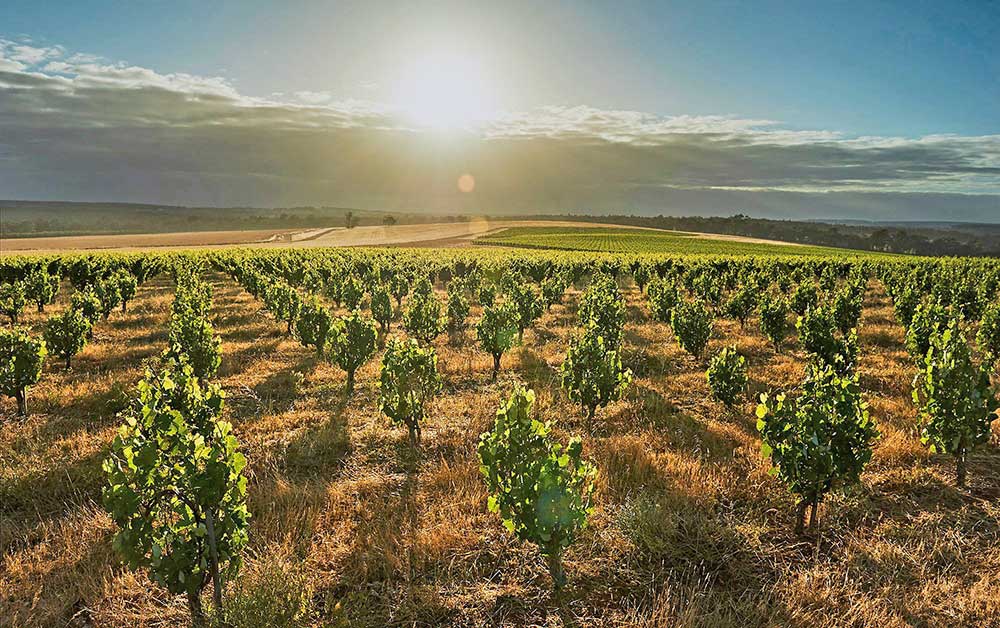 Bush vines in Swinney Estate vineyards are dry farmed using organic practices.
Bush vines in Swinney Estate vineyards are dry farmed using organic practices.
Both estates are located in the beautiful but remote region of Frankland River, which sits about 360km (4 hours) south of Perth. It’s one of the 5 sub-regions that make up the immense (almost the size of Switzerland) Great Southern Wine Region - the other 4 being Mt Barker, Albany, Denmark and Porongurup.
The region lies inland at an elevation of between 200-300m, so it’s cool-climate, with the mean January temp only 19 degrees. The dryer days and cooler nights make it the perfect place to grow almost any type of grape, and a wide range is grown, but the region is best known for shiraz, cabernet and of course riesling, with grenache also recently making an appearance. Halliday describes the isolated region as “one of Western Australia’s best-kept secrets.”
In 1955 Dr Harold (Harry) Olmos, then Professor of Viticulture at the University of California, was commissioned to report on the impacts of climate on grape production in the Swan district. He spent several months also travelling further afield, and when his findings were published in 1956, he identified Frankland River as an area of great promise for the production of wine.
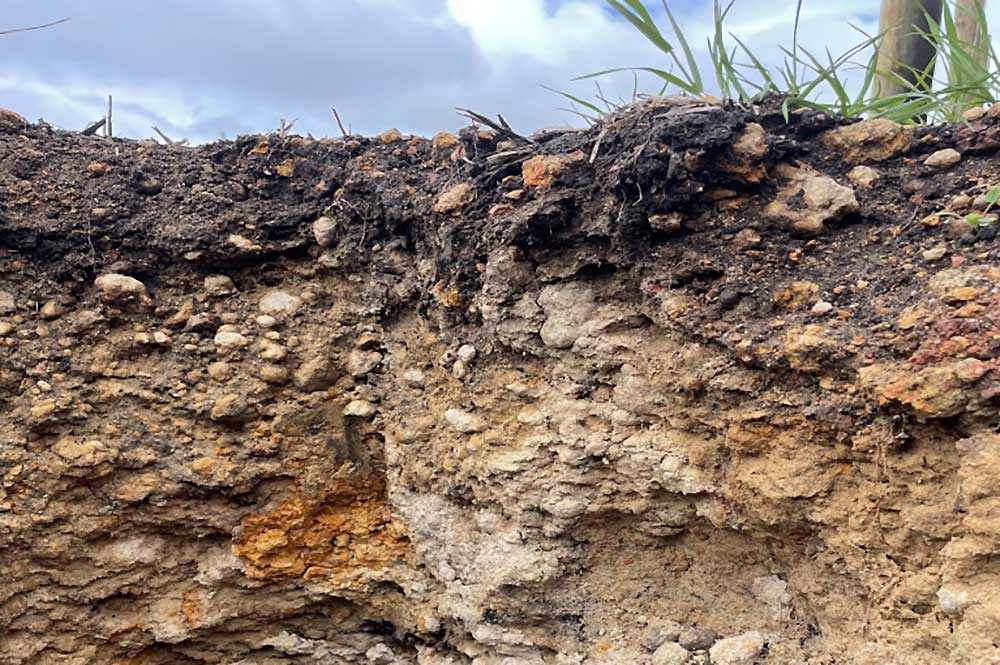 Frankland Estate vineyards consist of ironstone gravel over clay subsoil - fragile soils which demand great care. The estate became organically certified in 2009.
Frankland Estate vineyards consist of ironstone gravel over clay subsoil - fragile soils which demand great care. The estate became organically certified in 2009.
Olmos’ work was furthered in the 1960s by Dr John Gladstones, a little-known research scientist with the WA Department of Agriculture. His main job had been the breeding of lupins for industry, but his passion was vines. In his spare time, he would roam the regions, looking at the landscape and analysing soils to find the perfect vineyard sites. His earlier research had encouraged Drs Kevin Cullen and Tom Culity to give up their medical practices and establish Cullen Wines and Vasse Felix in Margaret River, but his soon to be released publication ‘Viticulture and Environment’ would go further. In it, he looked at climatic data in intricate detail, comparing the best sites in Bordeaux, Burgundy and the Rhône Valley with potential sites in Australia. Aside from discovering that Margaret River’s climate was strikingly similar to Bordeaux, he also found the whole southeastern corner of Western Australia, and especially Frankland River, had incredible potential.
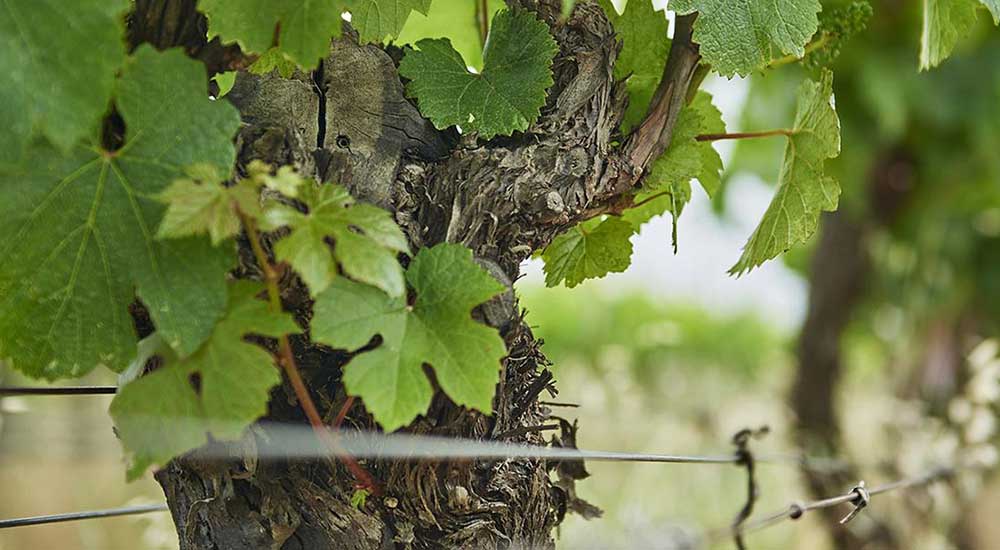 "Freedom from noise and light pollution makes for a beautifully clean growing environment, and the stable climate lends itself to organic viticulture." Frankland Estate.
"Freedom from noise and light pollution makes for a beautifully clean growing environment, and the stable climate lends itself to organic viticulture." Frankland Estate.
The first of the modern-day vineyards was planted in 1967 on the Roche family property, now leased by Houghtons, with others following soon after, including Alkoomi in in 1971. The region experienced significant growth in the 80s and 90s, and today is around 1,600ha. By comparison, Margaret River is around 5,700ha and the Barossa is 11,600ha.
Frankland River is a landscape of great natural beauty, characterised by bushland, wildflowers and rich farmlands, as well as some of WA’s largest single plantings of olive trees.
Frankland Estate and Swinney are two of Frankland River’s best producers, one a pioneer, the other a new kid on the block.
Frankland Estate - The Pioneers
Frankland Estate sits in a vast and dramatic landscape of wide-open spaces, about 4 hours drive from Perth. The vineyard was established by husband-and-wife wool and wheat farmers Barrie Smith and Judi Cullam in 1988. Following Dr Harry Olmos’ and John Gladstone’s predictions, they analysed potential sites within their property and then spent several vintages at Chateau Senejac in Bordeaux, learning all they could before planting a range of varieties back home, in what is now recognised as one of the best vineyards in the country.
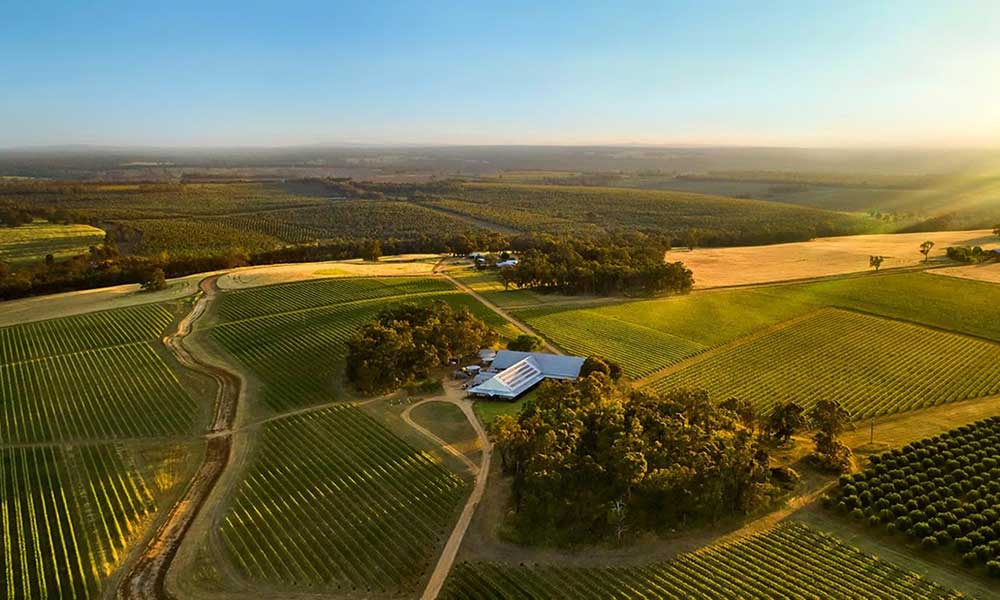 “Frankland Estate has emerged as one of the great vineyards of Australia,” Huon Hooke,
“Frankland Estate has emerged as one of the great vineyards of Australia,” Huon Hooke,
5 Star Rating, James Halliday Wine Companion.
“Frankland Estate: superb wines that stand the test of time,” Max Allen, Fin Review August 2018.
From their first vintage in 1991, the couple focussed on “minimising our impact on the ecological balance of the region, nurturing the microbiology of our soils and supporting causes to improve the health and future prosperity of our local fauna and flora.” With such an approach it was a natural progression for the estate to become organically certified, which it did in 2009.
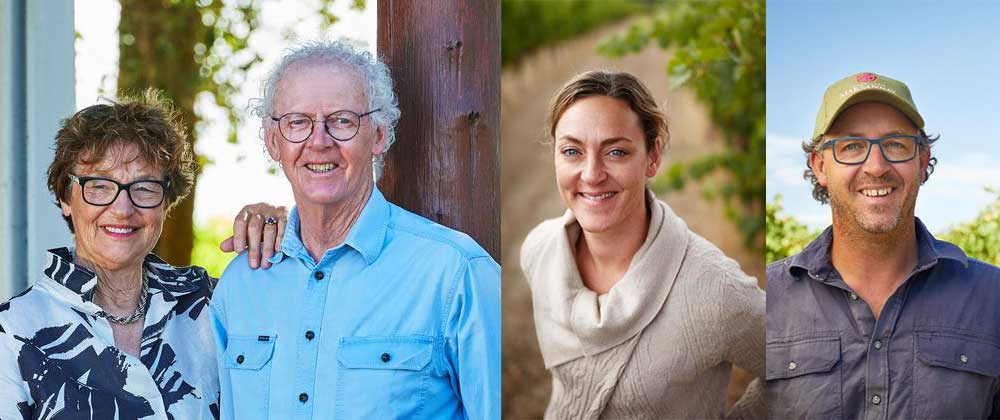 These days the estate is run by Barrie (who sadly died just last year) and Judi’s children, Elizabeth and Hunter, who live on the property with their own families.
These days the estate is run by Barrie (who sadly died just last year) and Judi’s children, Elizabeth and Hunter, who live on the property with their own families.
I offered the 2018 vintage of this wine last year and it sold out in a flash. This latest vintage is the one that was included in the Top 100. It’s certified organic, 14.5% alcohol and sealed with a screwcap.
“This wine was fermented as long and slowly as possible, at temperatures not exceeding 28ºC in open fermentation tanks that allowed the cap to be worked by gentle plunging. An extended maceration period followed completion of the ferment to allow optimal texture and flavour extraction. It was aged for 14 months in 500 litre French oak puncheons and stainless steel tanks.” Winemaker’s notes.
“Follows in the footsteps of the ’18. While the bouquet and palate alike are richly endowed, the cool continental climate shuts the door on any over-ripe, pudgy fruit characters. So, tannins play along with the black cherry fruit and utterly delicious savoury undertow. Drink to 2040.” 95 points and included in James Halliday’s Top 100 Wines of 2022 (Red Wines Under $40 Category).
“Shiraz has been a main player with Frankland Estate almost from the get go and this is one of the very best under this label. Okay, the vintage was excellent. But the approach to producing a wine that is truly reflective of place has been a resounding success. On the nose and palate, you get that ironstone ferrous intrigue that comes directly from this ancient soil. The palate is smoothly integrated with a deft use of oak and outstanding tannin management. The balance between the sweet medium weight fruit and those ironstone characters is what really make this wine exceptional. Drink 2022-2034.”
96 points, Ray Jordan, Wine Pilot.
“The 2020 Shiraz is excellent. It has vibrant yet dark fruit, lashings of five spice and aniseed, garden mint and red dirt, iodine and blood plum. This is spicy, layered, textural, elegant and exciting. The tannins are grippy yet fine, and it is here that the region really comes into its own. The structural integrity of the reds in Frankland is surely what is going to be the basis for the greatness of the region in time. Tannins and shape are naturally present in the wines from here. This is a beautiful wine.”
94 points, Erin Larkin, Robert Parker’s The Wine Advocate.
Incredible results, and unlike so many releases these days, it’s the same price as the previous vintage (the 2018). An absolute bargain. Stock up.
I can offer it for $27 a bottle (limited).
Swinney - New Kid in the Block
Well, not exactly. George ‘Farvie’ Swinney settled in the Frankland River area in 1922 and his 4th generation descendants, siblings Matt and Janelle Swinney, continue to farm the beautiful 2,500ha property. It was not until the 90s, that the family decided to plant vineyards, and 2012 before a small percentage of the grapes were kept to make their own wine.
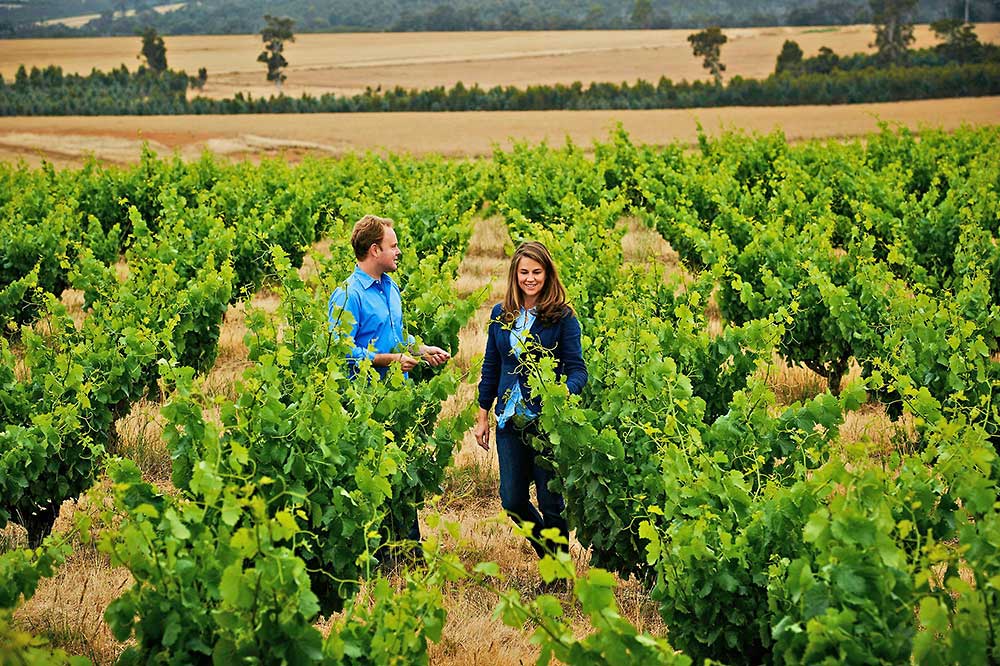 Fourth Generation Swinneys, siblings Matt and Janelle, grew up working alongside their parents and grandparents on the family farm at Franklands.
Fourth Generation Swinneys, siblings Matt and Janelle, grew up working alongside their parents and grandparents on the family farm at Franklands.
In 2014, well-known viticulturalist Lee Hazelgrove took over management of the vineyards, and 2018 saw the arrival of Rob Mann as winemaker. Since the release of the 2018 wines, Swinney has been an absolute darling of the critics.
“Swinney is flying.” Campbell Mattinson, The Wine Front.
“A new name to reckon with. The Swinneys aren’t new to vines but the recently launched brand amazed us with its formidable quality… the top reds, named Farvie, are shockingly good.” Huon Hooke, The Real Review.
“Validation is faith’s greatest reward, and right now Matt Swinney is up to his eyeballs in it.” Nick Ryan, The Australian.
5 Stars, Outstanding Winery, James Halliday, 2021 Australian Wine Companion.
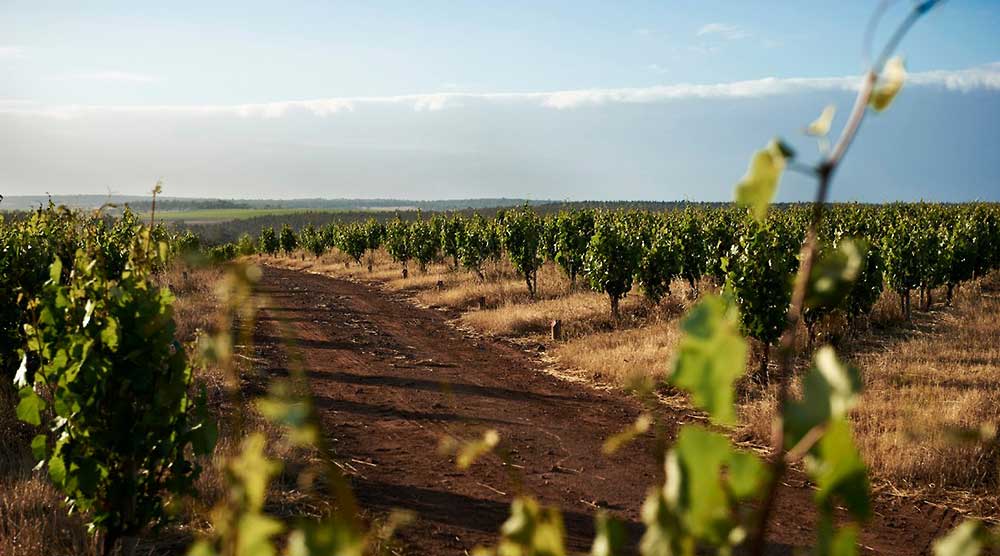 Much of Swinney’s success has been through their obsessive attention to detail in the vineyard, giving winemaker Robb Mann the highest possible quality of fruit to work with. Time and experience have allowed the best sites to be chosen, which are farmed using organic methods, minimal irrigation and reduced yields. Swinney was awarded Vineyard of the Year 2020 - Australian Young Gun of Wine Awards.
Much of Swinney’s success has been through their obsessive attention to detail in the vineyard, giving winemaker Robb Mann the highest possible quality of fruit to work with. Time and experience have allowed the best sites to be chosen, which are farmed using organic methods, minimal irrigation and reduced yields. Swinney was awarded Vineyard of the Year 2020 - Australian Young Gun of Wine Awards.
I’d come across winemaker Rob Mann through his own venture Corymbia (available here). Rob is the great-grandson of the legendary Jack Mann (of Houghton’s fame) and has worked at several high-profile wineries including Cape Mentelle and Hardy’s Tintara. He’s a highly talented winemaker and his involvement alone gave me the confidence that all the hype was warranted.
When I finally got to taste the reds with Rob last year, they were simply beautiful. Pure, intense, deep and yet fresh. These wines have an elusive mix of power and density with vitality and freshness, all the while being gorgeously smooth.
Swinney Farvie Grenache
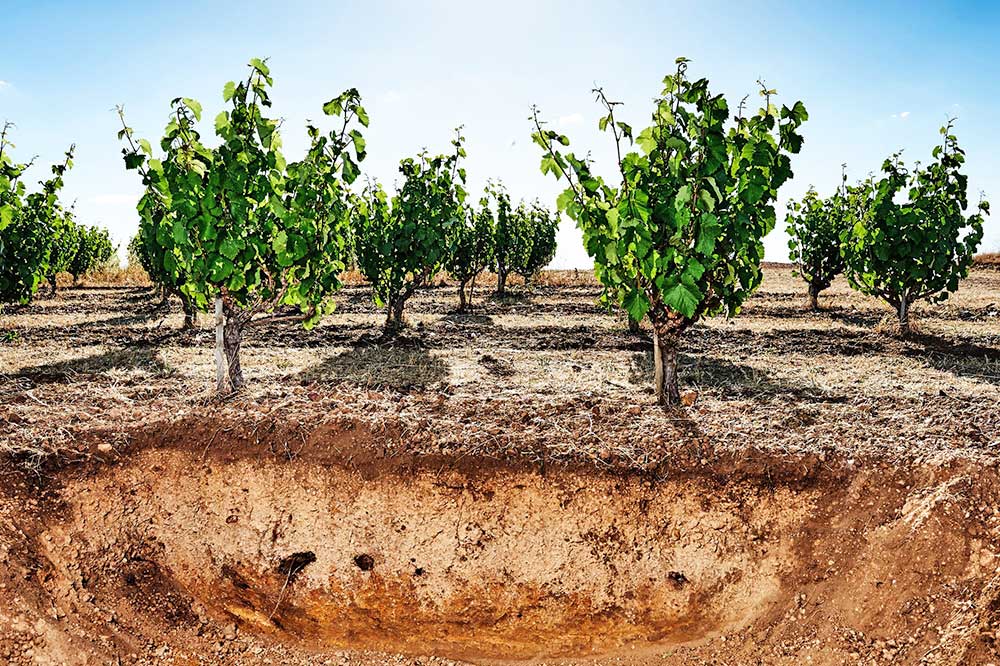 Swinney vineyards sit on ironstone gravel hill tops above the Frankland River and produce wines with a distinctly ferrous character The Swinney passion for bush vine viticulture is labour intensive but the lower yield and greater effort is worth it for its site-specific fruit.
Swinney vineyards sit on ironstone gravel hill tops above the Frankland River and produce wines with a distinctly ferrous character The Swinney passion for bush vine viticulture is labour intensive but the lower yield and greater effort is worth it for its site-specific fruit.
This is the wine that trade and critics are mad about. When it debuted with its 2018 vintage, this is the sort of response that ensued:
“The world’s best grenache is from WA,” Nick Ryan, The Australian.
“The grenache, in particular, tastes like no other Australian example of this variety and will change perceptions of the Frankland region.” Max Allen, Australian Financial Review.
“It left wine reviewers across the country gobsmacked and the gushing praise that continued on its international release on Wednesday left no doubt this is the most spectacular and important debut ever of a West Australian wine. On so many levels, the very first vintage of The Farvie Grenache from leading Frankland River producer Swinney Wines is quite simply a gamechanger.” David Prestipino, SMH, The Age & WA Today.
“This wine has emphatically inserted itself into the conversation around the best grenache wines on the planet,” Nick Ryan, The Australian.
“A stunning wine.” Huon Hooke.
This is the one included in the Top 100. It’s a blend of 93% grenache and 7% mourvedre. Handpicked fruit, from dry grown bush vines, was fermented using wild yeasts in a large French vat. 40% whole bunch was used. 10 days on skins, followed by ageing for 11 months in large format French oak. Minimal sulphur, unfined, minimal filtering. 14% alcohol, sealed with screwcap. Only 174 cases made.
“The combination of subtle floral perfumes and more rustic slightly herb and ferrous aromas is engaging. The mouthfeel and palate take this wine into a heady zone with the chalky mouthfeel and fruit intensity working harmoniously. There is a distinct ferrous ironstone character with that slightly wild influence that comes from the small amount of naturally fermented mourvedre. Tasted over three days and each time it revealed something new and exciting. It is rare to see a genre redefined, yet here it is.”
99 points, Ray Jordan, The West Australian.
“The 2020 vintage is proving to be an intransigent beast in Frankland. The reds are, on the whole, totally sensational, as this is. But they are fortified at this early stage by a fortress of tannin. When reviewing the Swinney Grenache, it took a full 24 hrs for the wine to show what I knew it had in it all along: supple, slinky, fleshy grenache fruit. This too, is extraordinarily reticent to open up at this stage, even after an hour in the glass, with repeat swirling events. Tight doesn’t cover it. This may be a profound wine, judging by its length and detailed construction, but it will require patience.”
96 points, Erin Larkin, Halliday Wine Companion.
James Halliday’s Wine Companion 2023. Included in Top-Rated Grenache category.
“Grenache’s reach grows from Victoria to Western Australia. A wine of utmost clarity and purity, its perfumed red flower and violet bouquet extremely good, the precision and clarity of the juicy red berries/cherries even better, mouth-watering and lingering, but never sweet.”
97 points and included in Halliday’s Top 100 Wines for 2022 (Red Wines Over $40 category).
I can offer it for $150 (limited).
Swinney Farvie Syrah 2022 is now available.
Swinney Farvie Mourvedre 2022 is now available.